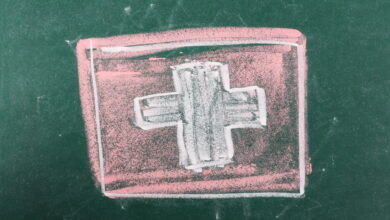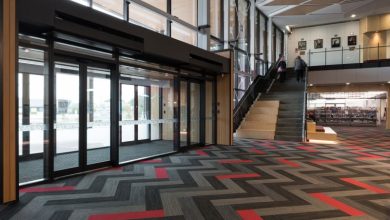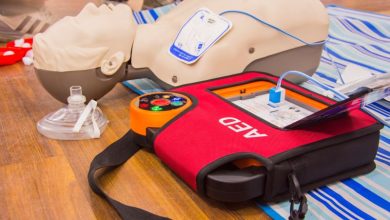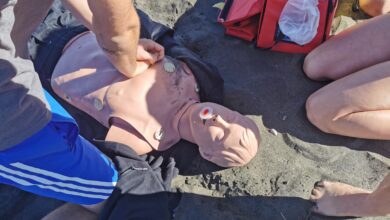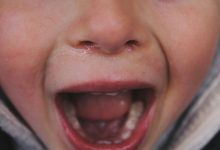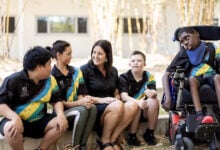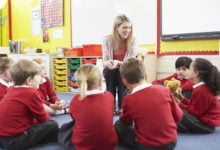Head lice and nits remain a worldwide bane
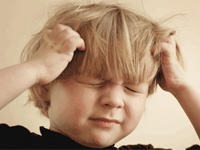
 A few decades ago, who would have thought that common head lice would still be a considerable nuisance to humanity in the 21st Century.
A few decades ago, who would have thought that common head lice would still be a considerable nuisance to humanity in the 21st Century.
And a nuisance they still are, in fact according to Wikipedia, they are one that is increasing, rather than declining. The online dictionary says the number of cases of human louse infestations (or pediculosis) has increased worldwide since the mid-1960s, reaching hundreds of millions annually.
“Despite improvements in medical treatment and prevention of human diseases during the 20th century, head louse infestation remains stubbornly prevalent. In 1997, 80 per cent of American elementary schools reported at least one outbreak of lice. Lice infestation during that same period was more prevalent than chicken pox,” Wikipedia says.
“About 6-12 million children between the ages of 3 and 11 are treated annually for head lice in the United States alone. High levels of louse infestations have also been reported from all over the world including Israel, Denmark, Sweden, U.K., France and Australia.”
Head lice can even strike adults at the very highest levels. In 2009, 18 senators were sent home from Congress after a routine screening found an infestation of nits, larvae, and adult parasites living on the scalps of high-ranking Washington lawmakers. All daily sessions were temporarily suspended.
Internationally, it seems generally accepted that the number of children per family, the sharing of beds and closets, hair washing habits, local customs and social contacts, healthcare in a particular area (e.g. school) and socio-economic status, are significant infestation factors. Almost certainly because of their generally longer hair, girls are said to be two – four times more at risk than boys.
There is nothing new in this. Lice eggs (nits) have been found in the hair of Egyptian mummies 4,000 years old, so who knows for how long they have tormented human beings. Fortunately, they are not a problem that normally threatens lives – the consequence of their presence is normally no worse than itching and discomfort. But it is children who are most at risk, mainly because they are likely to be in much closer proximity to each other than adults.
Touching heads gives the lice the chance to migrate from one host to another, where they feed on fresh blood. Head lice have tiny antennas which they use to detect their favourite type of food source and living environment. They scan the scalp for the most desirable odour, humidity and temperature. It is also believed that they can detect specific blood types and will rapidly migrate to a new host that might taste better.
It is the saliva, which people are allergic to, that causes the itching and tell-tale head scratching among pupils. While the effects on their health are not likely to be serious, the irritation can have a serious effect on their schoolwork. And as only some form of reasonably sophisticated intervention will alleviate the problem, children are dependent on adults for a permanent solution.
New Zealand children are as much at risk as those of any other nation. The Ministry of Education regards lice as so much of a problem that it devotes several thousand words to it on its website. It recognises that the responsibility on teachers is not only to recognise the problem but decide how they should handle it.
As an infestation is often erroneously regarded as a sign of lack of cleanliness or lower economic status, identifying a carrier can have a psychologically devastating effect on both the child and its family. Teachers need to tread carefully. The sooner the problem can be eliminated, the better.
That is easier said than done as there is no easy answer. Skilled combing out of the lice and physically picking out the nits are time honoured techniques. Electronic combs are also said to help. There is also a variety of modern chemical treatments, but no one has yet found the perfect solution.
However, several companies in New Zealand offer techniques or equipment that can help. One is the Nit Crew which holds the exclusive rights to market the LouseBuster medical device.
“It kills any nits and lice directly in the path of a steam of hot air, by dehydrating them,” said registered operator Hiria Tribble. “Any live lice that remain have been made infertile, so are no longer a threat.
“We follow up with a comb-out to remove anything live remaining. This can take up to an hour, depending on the condition and type of hair. The LouseBuster is not a magic pill, but it is scientifically proven to be effective, and part of the FDA clearance means that you cannot make false claims about efficacy,” she said.
Levy Medical Technologies offers the RobiComb, an electronic lice comb which detects, kills and removes head lice electronically. Company director Irit Levy says it is a chemical free-solution which can be the only way to get rid of lice if and when they become resistant to chemicals.
“Also, as it is chemical free, it doesn’t cause any damage to the hair or the scalp and avoids use of poisons on children. Once the device has been purchased, it becomes a cheap long-term solution to controlling head lice. Repeated use over the days following discovery stops the head lice lifecycle.” She said RobiComb can be used repeatedly on children within the school environment.”
Sara Williams at Wilson Consumer Products says the NeutraLice range has a complete solution for head lice, with two treatment products and two removal products. “NeutraLice Advance is a pesticide free product that stops lice breathing and breaks the grip on the hair shaft. It also treats the eggs,” she said. “This product has been clinically proven to work, is fast, easy and is suitable for sensitive skin. NeutraLice Spray is a natural treatment that uses tea tree oil and lavender oil to treat head lice and the eggs. It is suitable for parents who want to use a natural product on their children with a pleasant smell and has also been clinically proven.
“In between treatments, parents need to continue to remove dead and dying lice and eggs. They can use NeutraLice conditioning shampoo which is specially formulated for daily use to rid the scalp of dead lice. It contains acetic acid which break the bonds between the head lice and the hair shafts, making it easier to comb out.”



